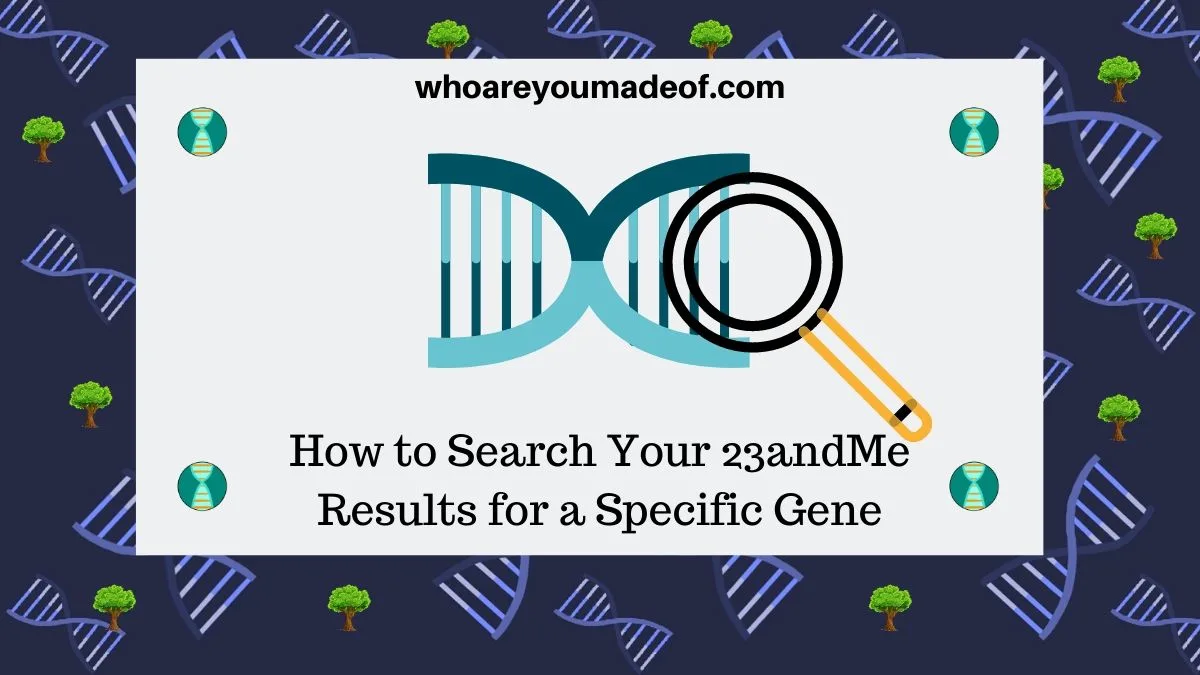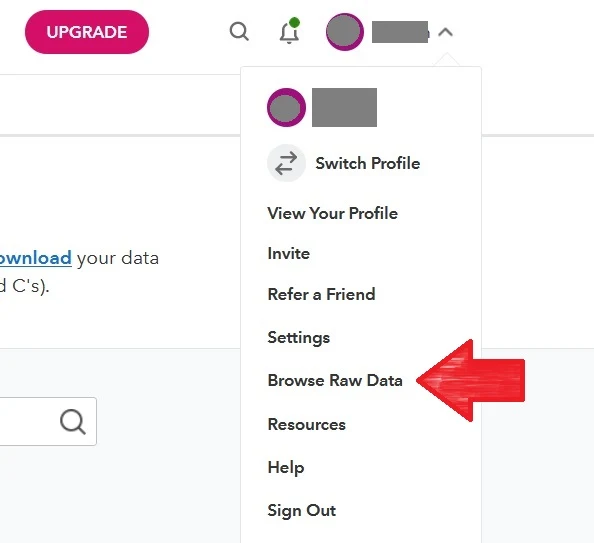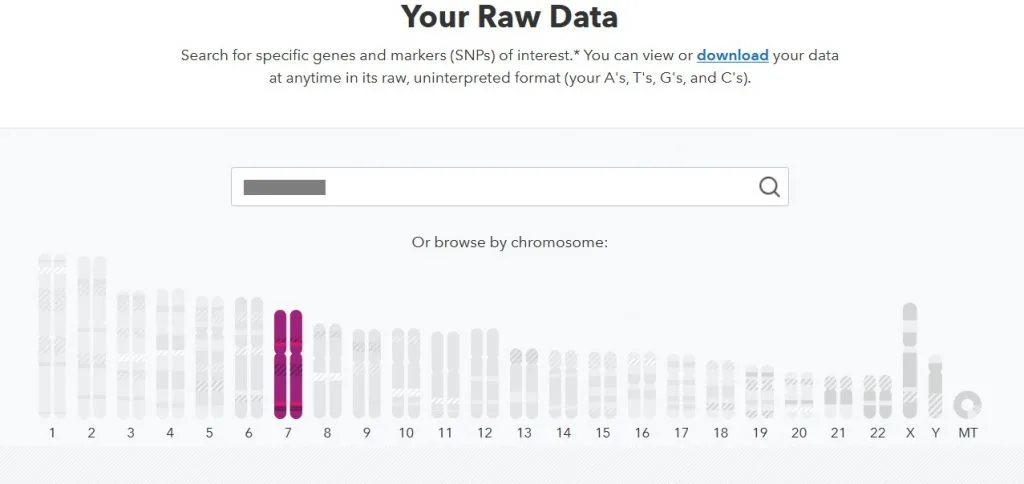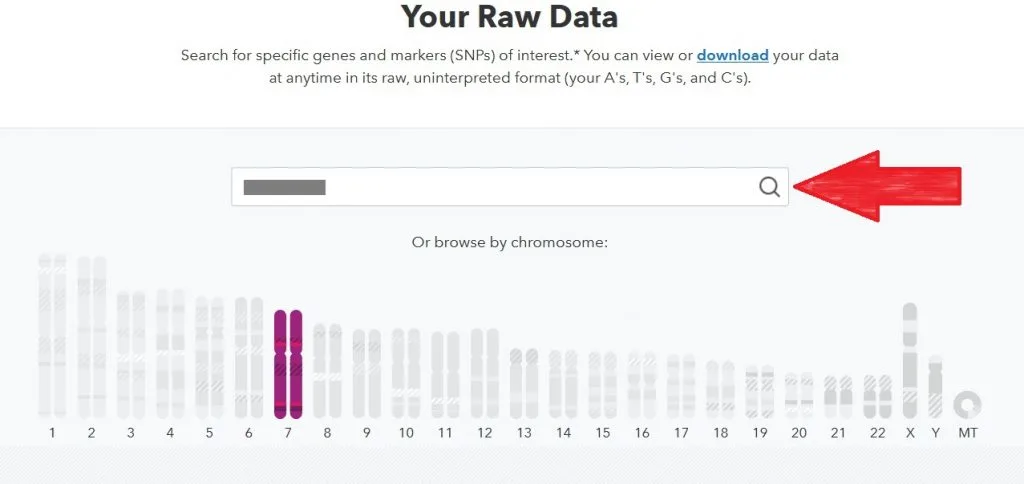Did you know that you can search your DNA data on 23andMe for a specific SNP? In this post, learn how to browse your raw data on the site to find specific genes.
While 23andMe results are most useful for building your family tree and exploring where your ancestors most likely lived over the past several hundred years, there is more that you can do with your results.

Exploring your raw DNA data on the site is just one of those things. 23andMe is a great test, and it's amazing that there is so much we can do with (and learn from) one seemingly simple DNA test.
There are many reasons that you might be curious about which genes or SNPs you have in your raw DNA. No matter you motivation for wanting to check specific locations in your genome, you'll find instructions on how to find this data below.
Please note that the information in this post is for entertainment purposes only. I do not advise using your 23andMe raw data to attempt to diagnose, treat, or avoid any illness. It's best to discuss these types of concerns with your doctors.
How to Browse Raw Data on 23andMe
It's really easy to access the 23andMe tool for browsing and searching your DNA. Follow the steps in this section to find the tool on your results.
The first step to browsing your raw genetic data on 23andMe is to log in to your account and click on the down arrow that's by your name in the top right corner:

This will take you to your raw data browser tool. You should see a screen that looks something like the image below:

This tool allows you to search in two ways for specific genes or SNPs on your chromosomes:
- You can search by the gene or rs number of a specific SNP (single nucleotide polymorphisms)
- Alternatively, you can browse each chromosome to see which genes are listed
Learn more about how to search using each method in the sections of this article below.
How to search by SNP or gene name on 23andMe
To search your DNA by SNP or gene name, if you know it, you can use the search bar immediately above the image of your chromosomes.
Simply type in the name of the gene you are looking for, or the rs number of the SNP, and press the search icon.

If you have the gene or SNP in your DNA and it is included in the raw data, it will show up in a list below the image of your chromosomes.
How to search 23andMe data for gene by chromosome
If you know which area of a particular chromosome interests you and you would like to see which genes and SNPs are available to browse in that location, you can click on the chromosome number in the image.
Once you do, all of the available genes and SNPs will populate in a list below the image of your chromosomes.
The list is likely to be very long, since 23andMe tests many locations in our DNA. While examining your list, keep in mind that you can click "Load More" at the bottom of the list to continue viewing genes and SNPs on that chromosome.
I think that exploring the genes and SNPs by chromosome is especially interesting because we can examine those areas tested on our X-DNA and mitochondrial DNA. Males who have tested with 23andMe can also examine their Y-DNA.
What to do with information learned from browsing gene data?
If you find a gene or SNP that is interesting to you, you can definitely do a Google search. You might even find that you can click directly on it and 23andMe will send you to a page with further information about it.
23andMe states on their website that it is important to not make any big changes in your lifestyle based on information learned from your raw data. In fact, it's very important to talk with a doctor about any concerns that you may have.
The science of understanding exactly how having a gene or SNP present in our DNA affects our bodies, personalities, and likes and dislikes, is complicated. The field is still developing and there is much left to learn.
For example, having a particular SNP near a specific gene (called the gene's regulatory zone) might mean that they are more likely to exhibit a particular trait. As you can see, there many details to understand.
We can view much of the data as interesting and possibly even entertaining. For example, there is some research that suggests certain genes make us more likely to drink a lot of coffee (and enjoy it!).
In addition, the process of exploring our raw data can cause us to learn, which is always wonderful.
To really get meaningful information from our raw data, we often have to dig pretty deep into the science or consult with experts (especially medical professionals) who have a more thorough background in understanding genetics than the average person does.
Conclusion
I hope that this post has helped you learn exactly how to go about exploring your raw data on 23andMe. Are you ready to get to know your own genes just a little better?
Thanks for stopping by

